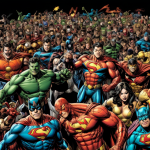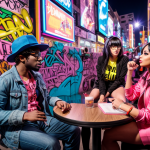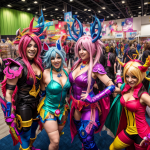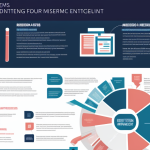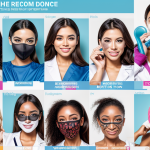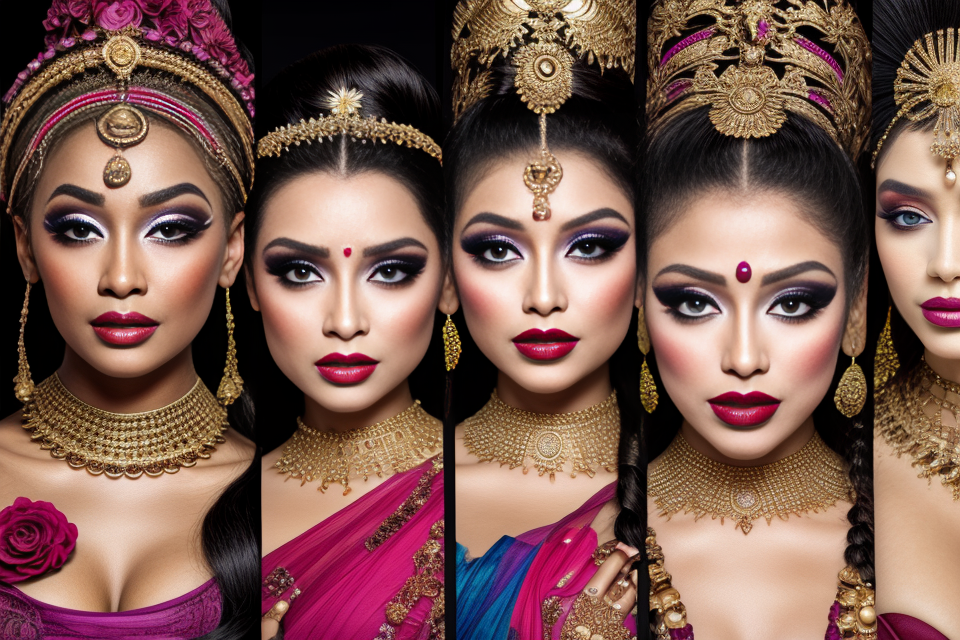The world of makeup has come a long way since its inception. From ancient civilizations to modern times, makeup has been used for various purposes, from enhancing beauty to expressing oneself. But what was makeup originally made for? This question has puzzled many people over the years, and the answer may surprise you. In this article, we will explore the fascinating history of makeup, from its origins in ancient rituals to its evolution into the trends we see today. Join us as we unveil the true purpose of makeup and discover how it has transformed over time.
The Roots of Makeup: A Brief History
The Early Use of Makeup in Ancient Civilizations
From the earliest days of human civilization, makeup has played a significant role in various cultures around the world. Here, we take a closer look at the early use of makeup in ancient civilizations, such as Egypt and China.
Egyptian Women and Their Love for Kohl Eye Makeup
Kohl eye makeup, a type of eyeliner made from ground minerals and other materials, was a staple of ancient Egyptian beauty regimens. Egyptian women believed that applying kohl to their eyes would protect them from the evil eye and ward off disease. They also thought that it would enhance their beauty and make their eyes appear larger and more alluring. Kohl was made in various shades, ranging from deep black to dark brown, and was applied with a small brush or a finger.
The Significance of Makeup in Ancient China and Japan
In ancient China, makeup was used as a means of enhancing beauty and as a form of protection against evil spirits. Women in ancient China used a type of makeup called “zhi” made from natural ingredients such as rice powder, flower petals, and beeswax. They believed that wearing makeup would improve their complexion and help them appear more youthful.
In ancient Japan, makeup was used in theatrical performances, such as Noh theater, where actors used makeup to enhance their character’s features and portray emotions. In Japan, makeup was also used by courtesans, who applied it to enhance their beauty and attract clients. They used makeup made from natural ingredients such as crushed beetles, which were believed to give the skin a rosy glow.
These ancient civilizations used makeup not only to enhance their beauty but also as a means of protection and to ward off evil spirits. They believed that makeup had magical properties and could bring about positive changes in their lives. The use of makeup in ancient civilizations is a testament to the importance of personal appearance and the desire to enhance one’s beauty, which continues to be relevant today.
The Evolution of Makeup in Europe During the Middle Ages
The Use of Rouges and Other Cosmetics by the Nobility
During the Middle Ages in Europe, makeup was not widely used by the general population. However, the nobility was known to indulge in the use of cosmetics, including rouges, which were made from crushed cochineal beetles, powdered coal, or flower petals. The use of these products was considered a sign of wealth and status, as they were expensive to obtain and use.
The Stigma Surrounding Makeup and Its Association with Prostitution
The use of makeup was not limited to the nobility during the Middle Ages. In fact, it was also associated with prostitution, which further fueled the stigma surrounding its use. Prostitutes were known to use makeup to enhance their physical appearance and attract clients. This association led to makeup being viewed as a tool for seducing men and tarnishing a woman’s reputation. As a result, the use of makeup was generally frowned upon and seen as inappropriate for respectable women.
Makeup in the Modern Era: A Cultural and Social Revolution
The Emergence of the Beauty Industry in the 20th Century
The 20th century witnessed a significant transformation in the world of beauty and makeup. The emergence of the beauty industry was driven by a variety of factors, including advancements in technology, shifting cultural attitudes, and the rise of mass media.
The Influence of Hollywood Stars and the Glamour of the Silver Screen
One of the most influential factors in the rise of the beauty industry was the glamour of Hollywood films and the stars who graced the silver screen. Actresses such as Marilyn Monroe, Audrey Hepburn, and Elizabeth Taylor were iconic figures who popularized a particular aesthetic that became aspirational for women around the world.
The beauty industry took notice of this phenomenon and began to develop products that could replicate the look of these stars. Makeup brands such as Max Factor and Helena Rubinstein, which had previously catered to stage performers and movie stars, began to market their products to the general public.
The Rise of the Makeup Artist and the Transformation of Makeup Techniques
Another key factor in the emergence of the beauty industry was the rise of the makeup artist. Prior to the 20th century, makeup was typically applied by actors or stage performers, but with the advent of mass media and the growing influence of Hollywood, makeup artists became a critical component of the beauty industry.
Makeup artists were responsible for creating the signature looks of Hollywood stars and for developing new techniques that could enhance and transform the appearance of the human face. They experimented with new products, such as lipstick and eye shadow, and developed new application techniques that allowed women to achieve a wide range of styles and effects.
In addition to their work in Hollywood, makeup artists also began to work in the fashion industry, creating runway looks and editorial features for magazines. This further expanded the reach of the beauty industry and solidified its position as a major cultural and economic force.
Today, the beauty industry is a multi-billion dollar global enterprise that encompasses everything from skincare and haircare to fragrances and cosmetics. It is a reflection of our cultural values and a testament to our ongoing fascination with beauty and self-expression.
The Impact of Social Media and Celebrity Endorsements on Makeup Trends
Social media platforms like Instagram and YouTube have revolutionized the way people learn about and apply makeup. These platforms provide a space for individuals to share their makeup tutorials, reviews, and opinions, which has created a community of makeup enthusiasts who are constantly seeking new products and techniques to try.
Celebrities have also played a significant role in promoting new makeup products and techniques. They are often seen as trendsetters and influencers, and their endorsements can significantly impact the popularity of certain products. For example, when a celebrity posts a picture on Instagram wearing a particular lipstick shade, it can lead to a surge in sales of that product.
In addition to endorsements, celebrities also use their platforms to share their own makeup routines and favorite products. This has led to a rise in “celebrity-inspired” makeup looks, where individuals attempt to recreate the same look on themselves.
However, the influence of social media and celebrity endorsements on makeup trends has also been criticized. Some argue that it creates unrealistic beauty standards and perpetuates a cycle of consumerism. It is important to note that these platforms should be used as a source of inspiration rather than a dictator of personal style.
Overall, the impact of social media and celebrity endorsements on makeup trends cannot be ignored. They have created a space for makeup enthusiasts to connect and share their passion for the art of makeup, while also providing a platform for companies to promote their products. However, it is important to approach these trends with a critical eye and remember that true beauty comes from within.
The Diversity of Makeup and the Fight Against Discrimination
In recent years, the makeup industry has witnessed a cultural and social revolution, as individuals from diverse backgrounds have taken a stand against discrimination and exclusion. The following are some of the ways in which the industry has embraced diversity and fought against discrimination:
The Inclusion of Diverse Skin Tones and Features in Makeup Advertising and Packaging
One of the most significant changes in the makeup industry has been the inclusion of diverse skin tones and features in makeup advertising and packaging. For many years, makeup advertisements and packaging featured predominantly white models, which reinforced the notion that people of color were not valued or represented in the beauty industry. However, in recent years, brands have started to include models of different races, ethnicities, and skin tones in their advertising campaigns and product packaging. This change has been driven by a growing awareness of the importance of representation and inclusivity in the beauty industry.
The Importance of Body Positivity and Self-Love in the Makeup World
Another significant change in the makeup industry has been the emphasis on body positivity and self-love. In the past, the beauty industry was often criticized for promoting unrealistic beauty standards that led to low self-esteem and body dissatisfaction. However, in recent years, many makeup brands have started to promote a more positive and accepting approach to beauty. They have encouraged individuals to embrace their unique features and celebrate their bodies, regardless of size or shape. This shift towards body positivity and self-love has been driven by a growing awareness of the harmful effects of traditional beauty standards and a desire to promote a more inclusive and accepting culture in the makeup world.
The Future of Makeup: Innovations and Sustainability
The Advancements in Makeup Technology and Applications
- The Rise of Clean Beauty and Cruelty-Free Makeup Products
As consumer awareness and demand for safer, more ethical beauty products continues to grow, the makeup industry has responded with a rise in clean beauty and cruelty-free options. These products prioritize natural ingredients, sustainable practices, and animal welfare, leading to a shift in the industry’s approach to formulation and sourcing. Brands are now investing in research and development to create products that align with these values without compromising performance.
- The Potential of 3D Printing and AI in the Development of Customized Makeup Solutions
3D printing and artificial intelligence (AI) are revolutionizing the makeup industry by enabling the creation of personalized products tailored to individual preferences and needs. With 3D printing, custom foundation shades can be generated on-demand, reducing waste and increasing inclusivity. AI-powered apps can analyze a user’s skin tone and suggest the perfect shade, further enhancing the shopping experience. Additionally, AI can be used to optimize product formulations based on specific skin types and concerns, resulting in more effective and targeted makeup solutions.
These advancements in makeup technology and applications are transforming the way products are developed, marketed, and consumed, offering both opportunities and challenges for the industry.
The Need for Environmental Responsibility and Ethical Production in the Beauty Industry
- As the beauty industry continues to grow and evolve, there is an increasing need for environmental responsibility and ethical production practices.
- Consumers are becoming more conscious of the impact of their purchases on the environment and are demanding more sustainable and ethical products.
- The beauty industry, like many others, has faced criticism for its contribution to plastic waste and pollution, as well as unethical labor practices.
- To address these concerns, many companies are turning to sustainable and eco-friendly materials, reducing waste and energy consumption, and ensuring fair labor practices throughout their supply chains.
- Certifications and regulations are also playing a role in ensuring that companies are meeting certain standards of sustainability and ethical production.
- However, there is still much work to be done in this area, and it is important for consumers to educate themselves on the environmental and ethical impact of the products they use and the companies they support.
FAQs
1. What is the history of makeup?
Makeup has been used by humans for thousands of years, with evidence of its use dating back to ancient civilizations such as Egypt, Greece, and Rome. Initially, makeup was used primarily for religious and ceremonial purposes, with different colors and ingredients having specific symbolic meanings. Over time, makeup evolved to become a tool for self-expression and enhancing personal appearance.
2. When was makeup first used?
The exact origins of makeup are difficult to pinpoint, but it is believed that humans have been using some form of makeup for over 10,000 years. Evidence of makeup use has been found in ancient Egyptian tombs, dating back to around 4000 BCE. These early forms of makeup were made from natural ingredients such as minerals, clays, and plant extracts.
3. What was the purpose of makeup in ancient times?
In ancient times, makeup was primarily used for religious and ceremonial purposes. Different colors and ingredients were believed to have specific symbolic meanings, and were often used to protect the wearer from evil spirits or to attract good luck. For example, in ancient Egypt, women would use makeup made from galena (a type of lead ore) to protect their skin from the sun and to ward off illness.
4. How has makeup evolved over time?
Over time, makeup has evolved from being a tool for religious and ceremonial purposes to a means of self-expression and enhancing personal appearance. With the rise of the beauty industry in the 20th century, makeup became more widely available and diversified in terms of its ingredients and application techniques. Today, makeup is used by people all over the world to enhance their natural features and express their individuality.
5. What are some modern trends in makeup?
There are many modern trends in makeup, ranging from bold and bright colors to more natural and minimalist looks. Some popular trends include contouring and highlighting, which involve using makeup to create shadows and highlights on the face to create a sculpted and radiant appearance. Other trends include using glitter and metallic shades for a dramatic and festive look, and using skin care-based makeup products that emphasize the natural beauty of the skin.
